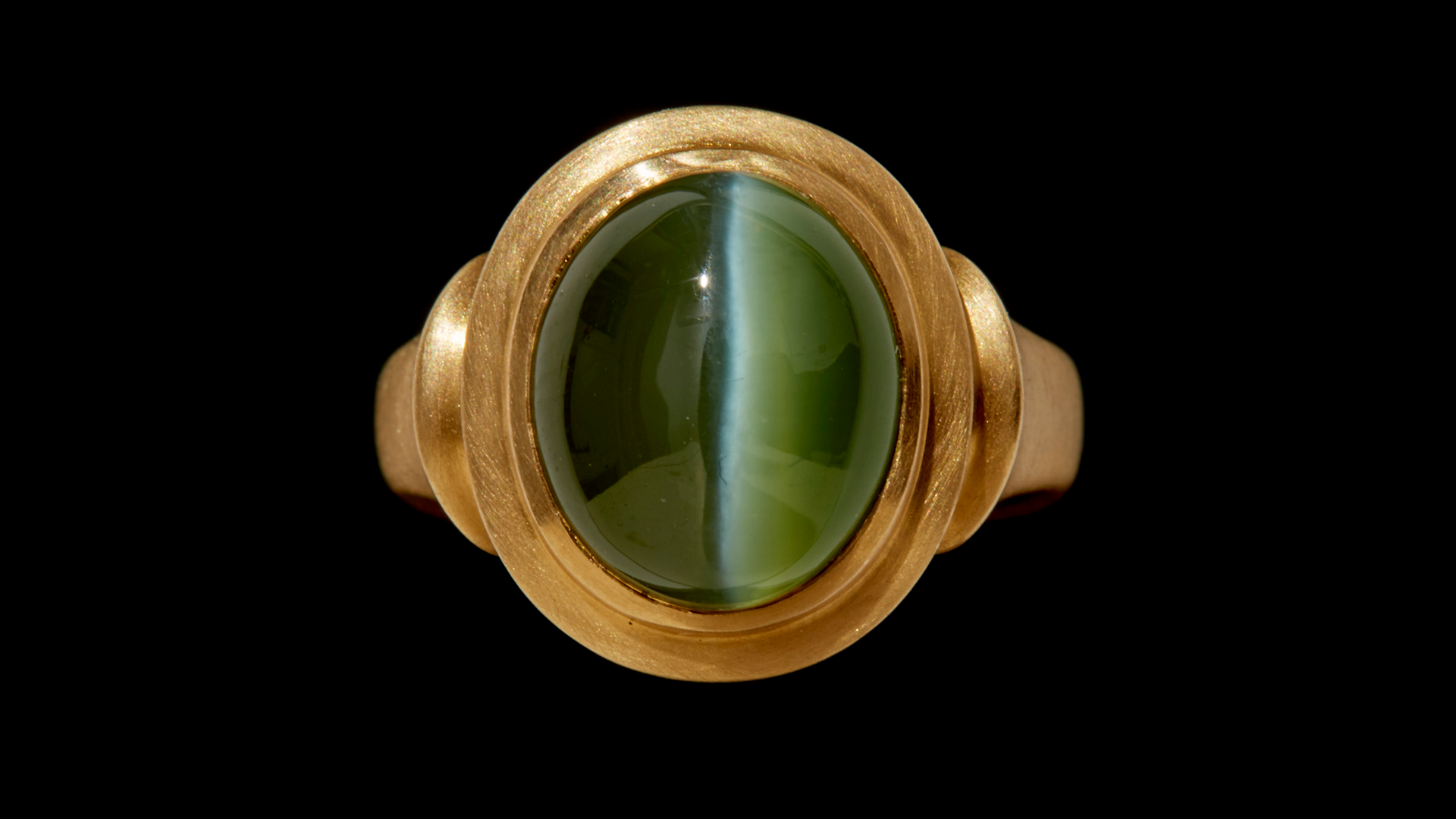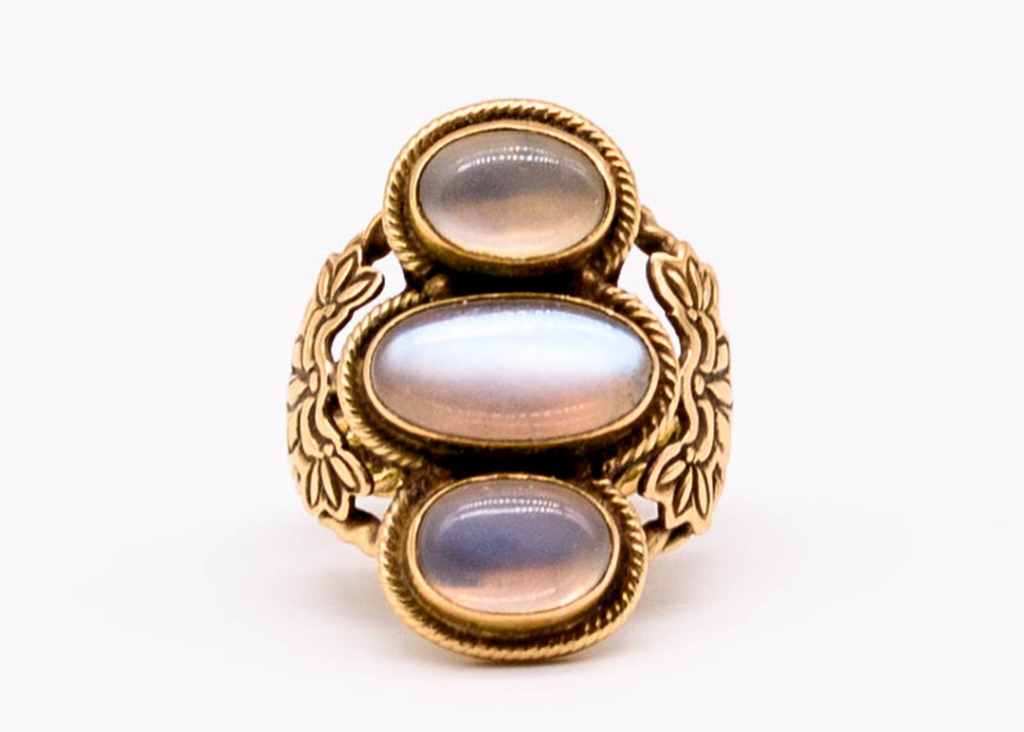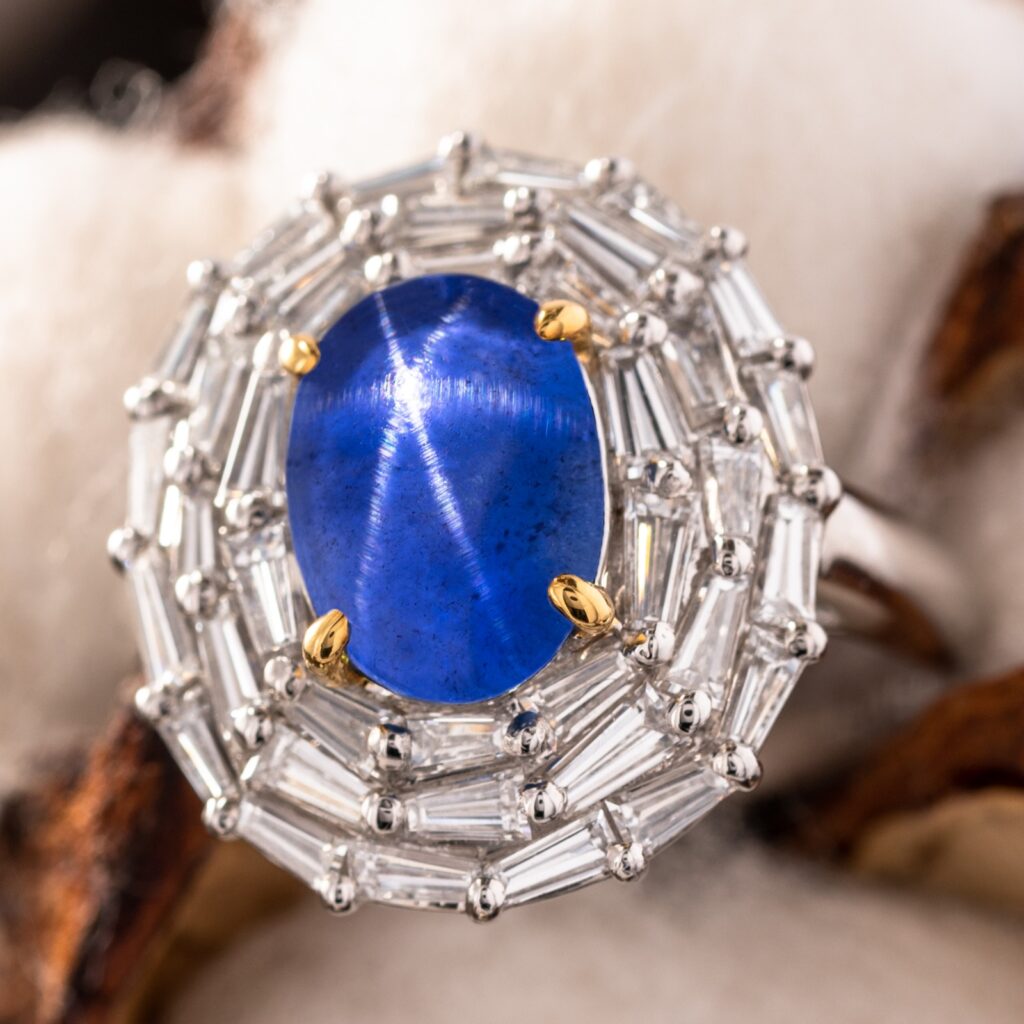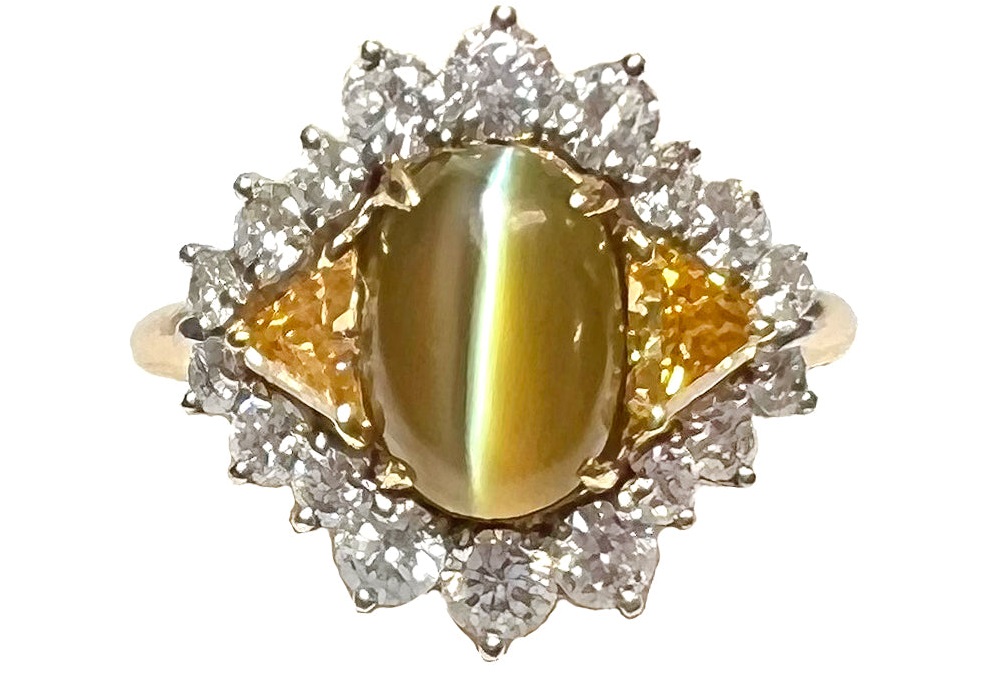Looking at a gemstone and its inner life is always intriguing, but some gems have distinctive optical effects that are particularly fascinating such as stars or color changes. Known as phenomenal gemstones, you’ll see a light show like none other when you gaze into these magical gems. Some of these effects can be found in a variety of gems, while others are specific to a particular stone. So what exactly are these special effects and what makes them happen? Adularescence, asterism, color change, play-of-color and chatoyancy are the optical effects that create a phenomenal gemstone.
Adularescence
Adularescence is the glowing sheen of light that you see floating across a moonstone. A part of the feldspar mineral family, moonstone is comprised of super thin layers of orthoclase and albite minerals, which alternate throughout the stone. When light hits the stone and falls between the layers, the light is scattered creating adularescence, the mystical color that floats across the stone like the full moon on a misty night. The highest quality moonstones have a blue sheen that flows across a colorless background, but that sheen may also be silver, white or rainbow. The optical effect of adularescence is what makes moonstone one of the phenomenal gemstones.
Asterism
Asterism is an optical effect in a stone that causes a star to appear. Asterism may be found in sapphires and rubies known as star sapphire and star ruby. For the star to appear, the stone must be cut as a cabochon, which is an unfaceted stone that has been shaped into a smooth dome on top with a flat bottom. The star is created when very fine, but dense, inclusions in parallel form reflect light inside the stone. The stars generally appear as six intersecting rays and are more distinct in some stones than others. Asterism may also be found occasionally in some types of quartz.
Chatoyancy
Chatoyancy, also called chatoyance, is bands of light that are created by light reflecting from tiny needle-like inclusions in the stone, it is also called cat’s eye. The word comes from the French phrase “ceil de chat”, which translates to cat’s eye. Chatoyance forms in a narrow band that will move as the stone is turned or tilted and is more pronounced in certain stones. Chatoyancy may be found in chrysoberyl, often referred to as cat’s eye, jade and occasionally in other gems.
Color Change
A color change gemstone is when a stone noticeably changes color when seen under different light, such as daylight or incandescent light. Alexandrite is an example of a color change stone. The color will generally change from green in daylight to red in lamplight, leading to the description “emerald by day and ruby by night”. Very rarely, you may find a sapphire, garnet or diamond that will display color change. A color change diamond is known as a chameleon diamond.
Play of Color
Play-of-color refers to the flashes of color that are seen in an opal. Opal is made of silica formed in tiny spheres and has a grid-like structure that allows light to flow between the spheres creating play-of-color, which is what makes opal a part of the phenomenal gemstone family. The size of the silica spheres determine the colors that will be seen in play of color. There are two types of opal: Precious and common. Only precious opal will have play-of-color.
If you love an unusual gemstone, you’ll be enthralled with the phenomenal gemstones that show off Mother Nature’s magical light shows in a fabulous jewel that you can easily wear and admire.
Featured image (top of page): Cat’s eye nephrite jade, diamond and brushed 18-karat gold ring, courtesy Kathryn Bonanno.
Authored by Amber Michelle





